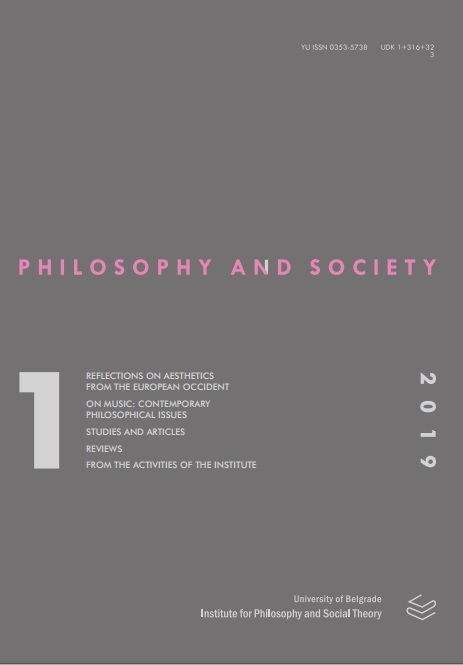Making Images Talk: Picasso’s Minotauromachy
Making Images Talk: Picasso’s Minotauromachy
Author(s): Ana Maria Leyra SorianoSubject(s): Visual Arts, Aesthetics
Published by: Institut za filozofiju i društvenu teoriju
Keywords: Labyrinth; Archetypes; Spanish Civil War; Minotauromachy; Guernica; Aesthetics
Summary/Abstract: We can say that Picasso’s images speak to us, and, as writing, speak to us from that space in which any text – far from being reduced to a single sense – “disseminates” its “truths”. Using the figure and the story of the Minotaur, Picasso devoted himself to one of the great themes of his pictorial work. The word “labyrinth” connotes, to the European mind, Greece, Knossos, Dedalus, Ariadne and the Minotaur. However, the Greek formula already represents a mythic and poetic outcome thoroughly developed from an imagery forged in the remotest eras of our evolution. The relationship between the image, the spiral, and the word, labyrinth is also linked to the perception of a drilled earth, excavated, with numberless tortuous tunnels which, in our imagination, provoke concern because they lead to the world of the inferi, the unknown depths of the realms of the dead. Juan Larrea, a little-known essayist in the sphere of philosophical studies, although, from the outset of international renown for Picasso’s work, he gives what is perhaps the best interpretation of Guernica and consequently also sheds much light on the engravings immediately preceding the execution of this painting, the Minotauromachy among them. The artist is not a prophet. He is not foreseeing what the future holds for humanity, but he does possess a heightened sensitivity that drives him to minutely scrutinise the conditions of the time that he has had to live, and he has a transforming eye for the symbols that constitute the deepest threads in the fabric of his culture.
Journal: Filozofija i društvo
- Issue Year: 30/2019
- Issue No: 1
- Page Range: 19-29
- Page Count: 11
- Language: English

